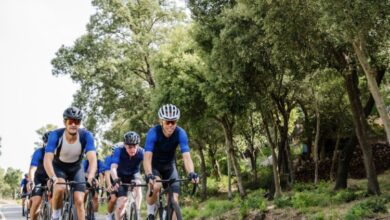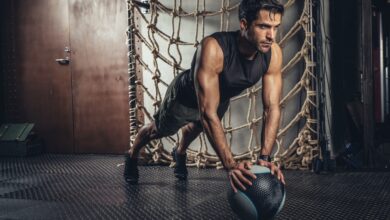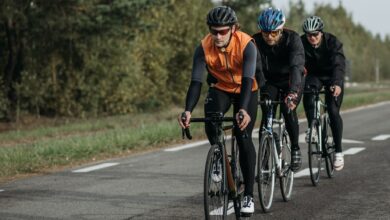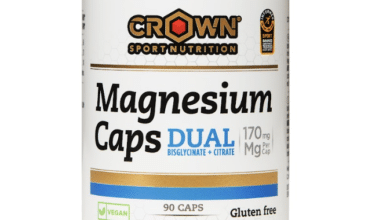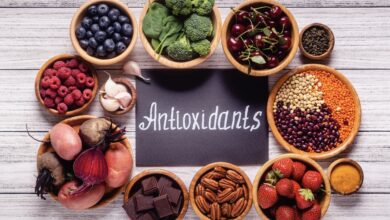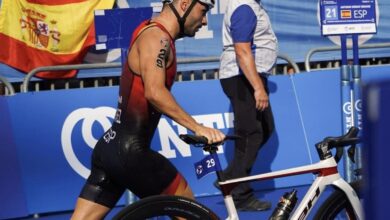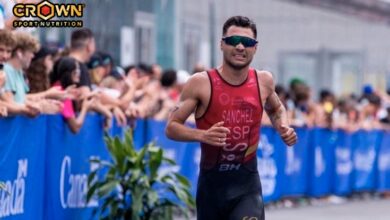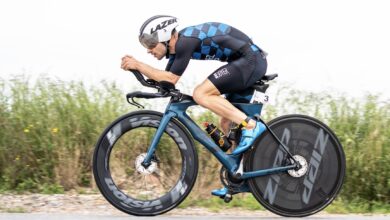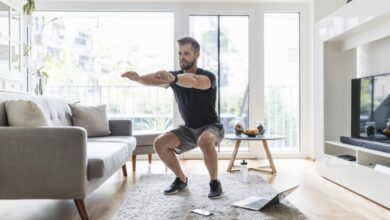How to properly hydrate on the roller?
It is important to have a correct hydration, since a roller training varies a lot compared to the road.

Crown Sport Nutrition, In collaboration with Aitor Viribay, UCI cyclist nutritionist from glut4science they tell us in this article how we have to hydrate properly on the roller to be able to perform to the maximum and not fall into dehydration
Right now, where Spain is confined to its homes, the roller training it is one of the alternatives that thousands of athletes have chosen to follow training at home.
In fact, the Spanish brand maintains its production during the crisis to maintain its employees' jobs, and therefore offers a 25% discount on the entire web
Indoor training and hydration
In roller training, it is very important to have a correct hydration, and it varies a lot compared to road training.
Must take into account various determining factors to optimize the adaptations of this type of training
When you train in a closed space, we hardly have ventilation and there is usually a high ambient temperature, something important for hydration.
The scientific literature on thermoregulation, hydration, and heat performance is increasingly extensive and can be extrapolated to roller training.

Why is hydration on the roller important?
Thermoregulation is one of the more complicated challenges the body has human during exercise, as it is very inefficient in energy production.
Around a 75-80% of production is heat and one of the body's priorities is to dissipate this heat to maintain thermal homeostasis.
What effects does high temperatures have on the human body?
We currently know that this increase in temperature carries side physiological effects as they are:
- Increased cardiac output and blood pressure
- Increased perception of effort
- Increased catecholamines
- Increased glucose consumption
All these effects are directly related to the loss of hydration which is accelerated in hot environments, by a decrease in the evaporation of the sweat produced and its elimination due to the absence of air.
This can lead to severe dehydration symptoms qThey are determined by a high loss of fluid and electrolytes.
In roller training the hydro-electrolyte imbalance increases
During the roller sessions the hydroelectrolytic imbalance increases in much higher ranges compared to outdoor exercise, even in high relative humidity and temperatures.
Likewise, the relative intensity The sessions increase due to the peculiarities of roller exercise (increased muscular and thermal stress).
In this sense, we have been able document dehydrations greater than 7% in professional cyclists during a 1,5-hour session on the roller, with a significant increase in urine density and a tripled loss of minerals (especially sodium and chlorine) in sweat (unpublished data, personal observations), which It allows us to get an idea of the high hydro-electrolytic demands of this type of sessions.
How to face a roller session?
The importance of do not underestimate the demands of a roll session It is decisive when it comes to optimizing the adaptations of these workouts, especially if they lengthen over time and consecutively.
Facing hydration, face the sessions with a slight hyperhydration ensures better thermoregulation and sports performance.
In fact, they have been documented severe performance losses en exercises of less than an hour after starting in a state of hypohydration
The two most important factors in hydration during exercise are as follows
- Sugar composition of beverages.
- Amount of sodium in beverages.
What is recommended?
It is recommended a intake around 7-10 ml / kg de body weight through a hypotonic drink in the 2-3h before exercise (2).
The need for use osmotic agents such as sodium, glycerol or creatine itself.
In this sense, the most recommended and studied is the sodium that can be obtained through commercial salt tablets. The approximate amount could be around 300-500 mg / l (7,8).
It is necessary to ensure a higher intake than training outdoors
Likewise, during exercise it is recommended to ensure a higher than usual intake andn road workouts.
This amount can be around 750-900 ml / h depending on the intensity and duration of the session, using isotonic drinks with different types of sugars such as glucose or maltodextrin and fructose.
Along these lines, beyond an increase in gastric emptying and transport of sugars in the intestine, a significant increase in net water absorption has been documented through the joint intake of different sugars with respect to a single monosaccharide.
Similarly, taking osmotic agents such as sodium increases the absorption and retention of ingested fluid, limiting internal losses.
High intake of drink with sugars is recommended
During roller sessions, therefore, a high intake is recommended (750-900 ml / h) of abebida containing sugars (6-9% or 30-45g per 500 ml) with different intestinal transporters and an approximate amount of sodium of 600-700 mg / l (2,10,11).
Drinking more often is essential
Regarding the rate of intake, recent studies show that a higher frequency of intake (15 min vs 30 min) offers sports performance benefitsor, coinciding with previous knowledge about a greater gastric emptying every 20 minutes.
Therefore, an intake frequency of 15-20 minutes is recommended.
Regulating the temperature of what we drink is important
Regarding the intake temperature is also important, since iIt directly influences thermoregulation. An approximate temperature of 8-12ºC is recommended.
What to do after the session?
After finishing the roll session, the hydroelectrolytic replacement it is a priority.
Although the recording of body weight and urine color are not reliable and precise parameters when it comes to research, at a practical level they seem to be a adequate strategy to control the state of hydration.
In this sense, a fluid intake around 150% of lost weight during the session (if 1 kg has been lost, intake of 1,5l) (11,13).
For this, the intake of slightly isotonic drinks (5-6%) that provide sugars with different intestinal transporters, as well as a minimum amount of sodium close to 500 mg / l.
The effect of possible ergonomic aids such as creatine, whose effects on fluid retention have been demonstrated, on hyperhydration after exercise remains to be determined.
Recommendation with crown sport nutrition products:
- Previous hydration with 2 scoops of isodrink & energy dissolved in 1l of water.
During exercise:
- Light sessions: 500 ml / h + 1 scoop of isodrink & energy + 1 tablet pro salt caps
- Moderate sessions: 500 ml / h + 2 scoops of isodrink & energy + 1 pro salts capsule
- Intense sessions: 750-900 ml / h + 2 scoops of isodrink & energy + 2 pro salts capsules.
- After exercise: 2 scoops of isodrink dissolved in 1l of water + 3 pro salts tablets depending on the weight lost.
References
-
Maughan RJ, Burke LM, Dvorak J, Larson-Meyer DE, Peeling P, Phillips SM, et al. IOC consensus statement: dietary supplements and the high-performance athlete. Br J Sports Med. 2018 Apr; 52 (7): 439–55.
-
Burke LM, Jeukendrup AE, Jones AM, Mooses M. Contemporary Nutrition Strategies to Optimize Performance in Distance Runners and Race Walkers. Int J Sport Nutr Exerc Metab. 2019 Feb; 1–42.
-
de Melo-Marins D, Souza-Silva AA, da Silva-Santos GLL, Freire-Júnior F de A, Lee JKW, Laitano O. Personalized Hydration Strategy Attenuates the Rise in Heart Rate and in Skin Temperature Without Altering Cycling Capacity in the Heat . Front Nutr. 2018; 5:22.
-
Stevens CJ, Mauger AR, Hassmen P, Taylor L. Endurance Performance is Influenced by Perceptions of Pain and Temperature: Theory, Applications and Safety Considerations. Sports Med. 2018 Mar; 48 (3): 525–37.
-
Deshayes TA, Jeker D, Goulet EDB. Impact of Pre-exercise Hypohydration on Aerobic Exercise Performance, Peak Oxygen Consumption and Oxygen Consumption at Lactate Threshold: A Systematic Review with Meta-analysis. Sports Med. 2020 Mar; 50 (3): 581–96.
-
Maughan RJ, Watson P, Cordery PAA, Walsh NP, Oliver SJ, Dolci A, et al. Sucrose and Sodium but not Caffeine Content Influence the Retention of Beverages in Humans Under Euhydrated Conditions. Int J Sport Nutr Exerc Metab. 2018 Oct; 1–10.
-
Baker LB, Jeukendrup AE. Optimal composition of fluid-replacement beverages. I bought Physiol. 2014 Apr; 4 (2): 575–620.
-
Ross ML, Stephens B, Abbiss CR, Martin DT, Laursen PB, Burke LM. Fluid balance, carbohydrate ingestion, and body temperature during men's stage-race cycling in temperate environmental conditions. Int J Sports Physiol Perform. 2014 May; 9 (3): 575–82.
-
Jeukendrup AE. Training the Gut for Athletes. Sports Med. 2017 Mar; 47 (Suppl 1): 101–10.
-
Jeukendrup A. A step towards personalized sports nutrition: Carbohydrate intake during exercise. Sport Med. 2014; 44 (SUPPL.1).
-
McCubbin AJ, Allanson BA, Caldwell Odgers JN, Cort MM, Costa RJS, Cox GR, et al. Sports Dietitians Australia Position Statement: Nutrition for Exercise in Hot Environments. Int J Sport Nutr Exerc Metab. 2020 Dec; 1–16.
-
Kozlowski KF, Ferrentino-DePriest A, Cerny F. Effects of Energy Gel Ingestion on Blood Glucose, Lactate, and Performance Measures During Prolonged Cycling. J strength Cond Res. 2020 Jan;
-
Webb MC, Salandy ST, Beckford SE. Monitoring hydration status pre- and post-training among university athletes using urine color and weight loss indicators. J Am Coll Health. 2016; 64 (6): 448–55.
-
Rodriguez NR, Di Marco NM, Langley S. American College of Sports Medicine position stand. Nutrition and athletic performance. Med Sci Sports Exerc. 2009 Mar; 41 (3): 709–31.
There are no previous results.









